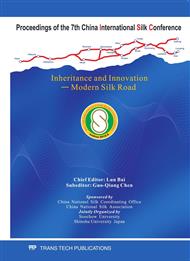p.987
p.993
p.999
p.1005
p.1011
p.1016
p.1024
p.1030
p.1035
A Study on the Flexibility of Apparel Manufacturing System
Abstract:
In the current and future apparel market, customer demands various products. The apparel plants have to face the ever-changing demands from product mixture and volume. Satisfying customer demands is an important strategic requirement. Failing to do so can result not only in lost profits caused by reduced sales, but also placing the manufacturers in danger of losing future market. So the plant must manufacture correctly and send the products to clients timely. Therefore, the time taken to manufacture high quality products is very important. Layout design is the method utilized on assigning the machine to a certain space. Facility layout includes product layout, process layout and cellular layout etc. The right facility layout can provide manufacturing flexibility and reduce manufacturing cost. In the general facility layout problem, the material flow and department relationship is a major optimization goal. This paper will discuss the manufacturing flexibility from facility layout and propose time as an additional requirement to the material flow and department relationship. This paper will also provide a layout model for flexible manufacturing in view of apparel manufacturing characteristics.
Info:
Periodical:
Pages:
1011-1015
Citation:
Online since:
January 2011
Authors:
Keywords:
Price:
Сopyright:
© 2011 Trans Tech Publications Ltd. All Rights Reserved
Share:
Citation:


